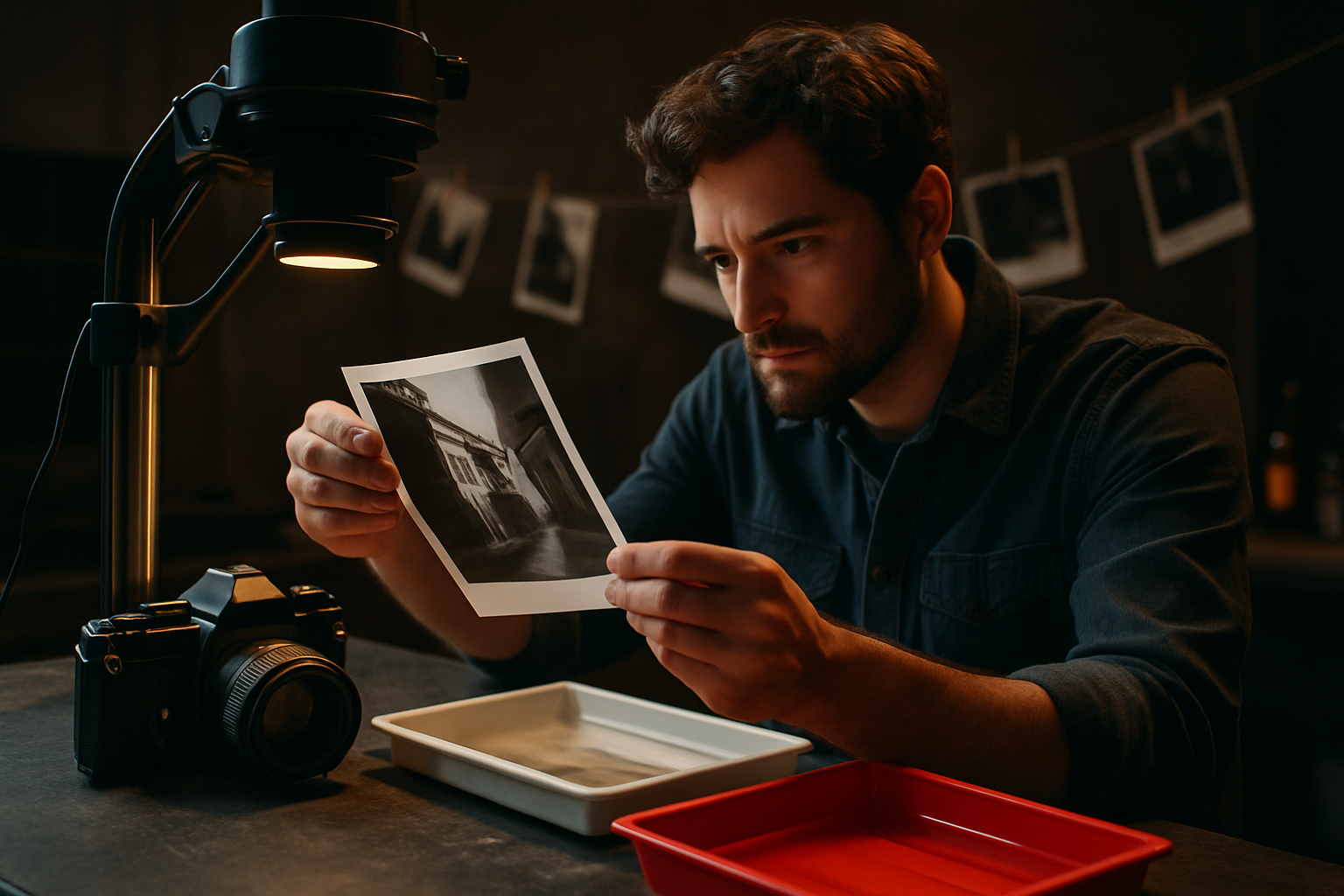The Resurgence of Analog Photography in the Digital Age
In a world dominated by digital technology, a surprising trend has emerged in the realm of visual arts. Analog photography, once deemed obsolete, is experiencing a remarkable renaissance. This resurgence is not merely a nostalgic nod to the past but a deliberate artistic choice that challenges our perception of image-making in the 21st century. As photographers and enthusiasts rediscover the unique qualities of film, we witness a fascinating interplay between tradition and modernity, reshaping the landscape of contemporary photography.

A Tactile Experience in a Digital World
Analog photography offers a tactile experience that digital simply cannot replicate. The process of loading film, manually adjusting settings, and physically developing photographs engages the senses in a way that clicking a button on a smartphone does not. This hands-on approach fosters a deeper connection between the photographer and their craft, encouraging a more thoughtful and deliberate approach to image-making. The physicality of analog photography serves as a counterpoint to the increasingly virtual nature of our digital lives.
The Slow Photography Movement
The resurgence of analog photography has given rise to what some are calling the Slow Photography Movement. This approach emphasizes intentionality and mindfulness in the photographic process, encouraging practitioners to slow down and carefully consider each shot. With limited exposures on a roll of film, photographers must be more selective and thoughtful about their subjects and compositions. This deliberate approach stands in stark contrast to the rapid-fire, shoot-first-think-later mentality often associated with digital photography.
Educational Renaissance
The renewed interest in analog photography has sparked an educational renaissance in darkroom techniques and traditional photographic processes. Art schools and community centers are reintroducing courses in film development, printing, and alternative processes like cyanotype and platinum printing. This revival of traditional skills not only preserves important artistic techniques but also provides a foundation for understanding the fundamental principles of photography, regardless of the medium used.
Bridging Generations Through Technology
Interestingly, the resurgence of analog photography has created unexpected bridges between generations. Young photographers, raised in the digital age, are discovering the magic of film for the first time, while older generations are rediscovering their passion for a familiar medium. This shared interest has fostered intergenerational dialogue and collaboration, with knowledge and skills being passed down and reinterpreted in new contexts. Social media platforms have paradoxically played a crucial role in this analog revival, allowing enthusiasts to share their film photographs and techniques with a global audience.
The Intersection of Analog and Digital
While the resurgence of analog photography represents a return to traditional methods, it does not exist in isolation from digital technology. Many photographers are embracing a hybrid approach, combining analog capture with digital post-processing and distribution. This intersection of old and new technologies has given rise to innovative practices and aesthetic possibilities. For example, some artists are experimenting with scanning film negatives at high resolutions, allowing for large-scale prints that retain the unique qualities of film while benefiting from digital printing technology.
Environmental Considerations and Sustainable Practices
The revival of analog photography has also prompted important discussions about environmental sustainability in artistic practices. While digital photography is often perceived as more environmentally friendly due to its lack of chemical processing, the production and disposal of electronic devices pose their own ecological challenges. In response, many analog photographers are adopting more sustainable practices, such as using eco-friendly chemicals and recycling silver from used film. This focus on sustainability adds another layer of intentionality to the analog photography movement.
The Future of Analog in a Digital World
As we look to the future, it’s clear that analog photography will continue to play a significant role in the visual arts landscape. Rather than being relegated to a niche hobby, film photography is increasingly recognized as a valid and valuable artistic medium alongside its digital counterpart. The resurgence of analog has sparked innovation in film production, with new emulsions and formats being developed to meet the demands of contemporary photographers. This ongoing evolution suggests that analog photography is not merely experiencing a temporary revival but is adapting and thriving in the digital age.





